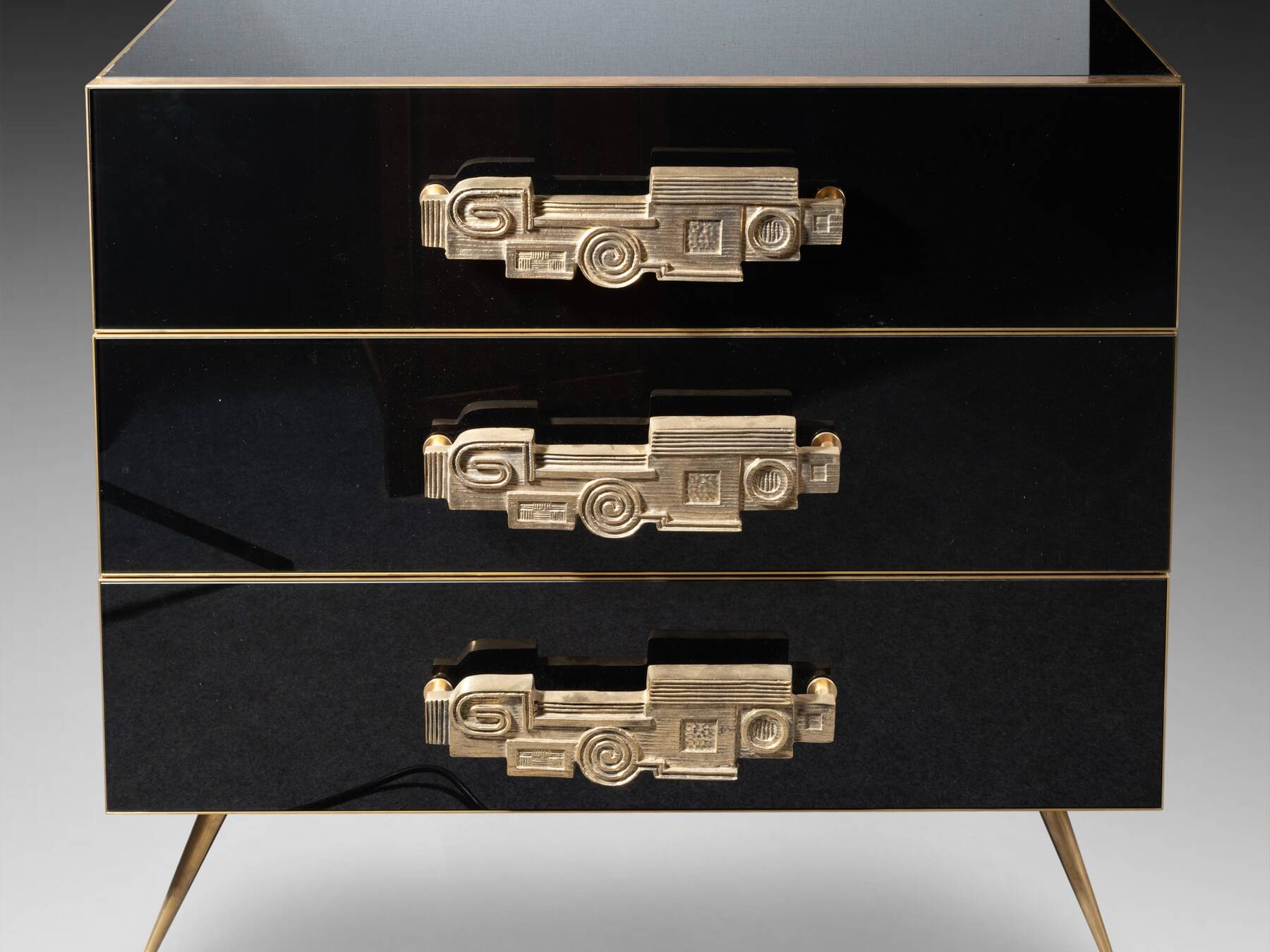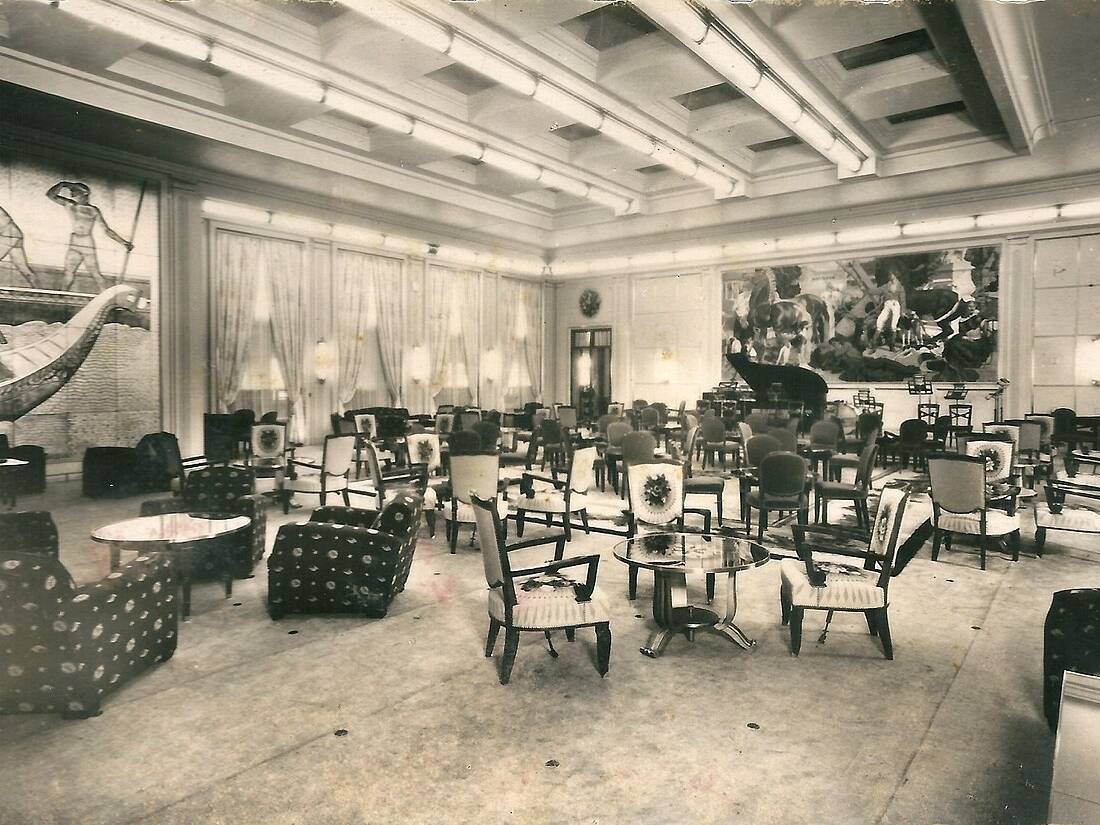Charles Hofman, a talented but discreet sculptor
Charles Hofman was born in 1896. This sculptor with a prolific but discreet career created a number of sculpted works paying homage to French political life and the conflicts that punctuated the 20th century. He became known as a statuary in Versailles and soon found himself asked to create numerous works and several war memorials, including that of Jarville-la-Malgrange in Meurthe-et-Moselle inaugurated in 1926. This monument bears a certain resemblance to the one the sculptor created at La Souterraine, in Creuse, and inaugurated in 1923. Throughout his career, Charles Hofman used both stone and bronze.
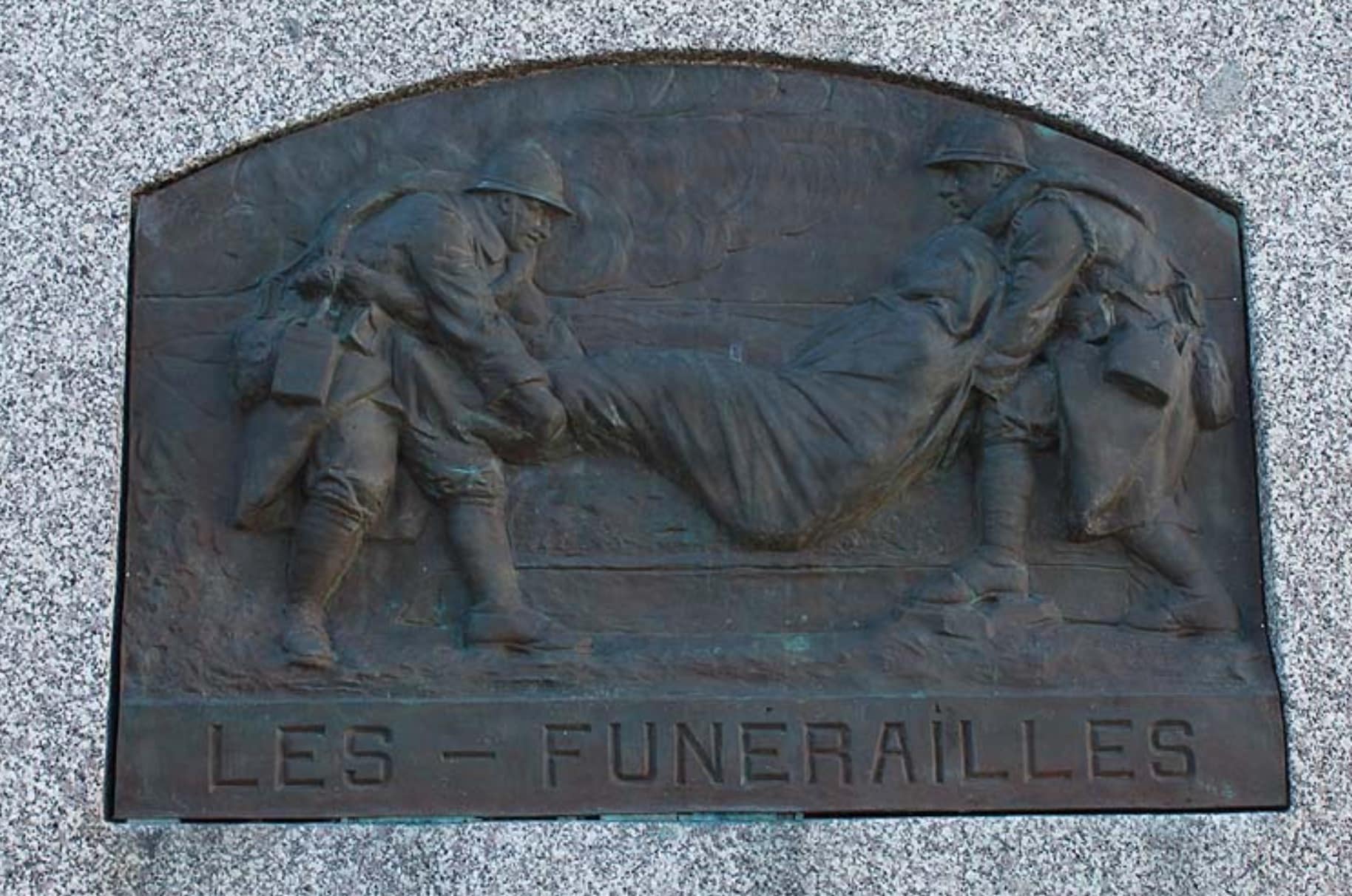
It was 1920 when the sculptor began creating this bust of Georges Clémenceau. At that time, the latter had just retired from political life for good.
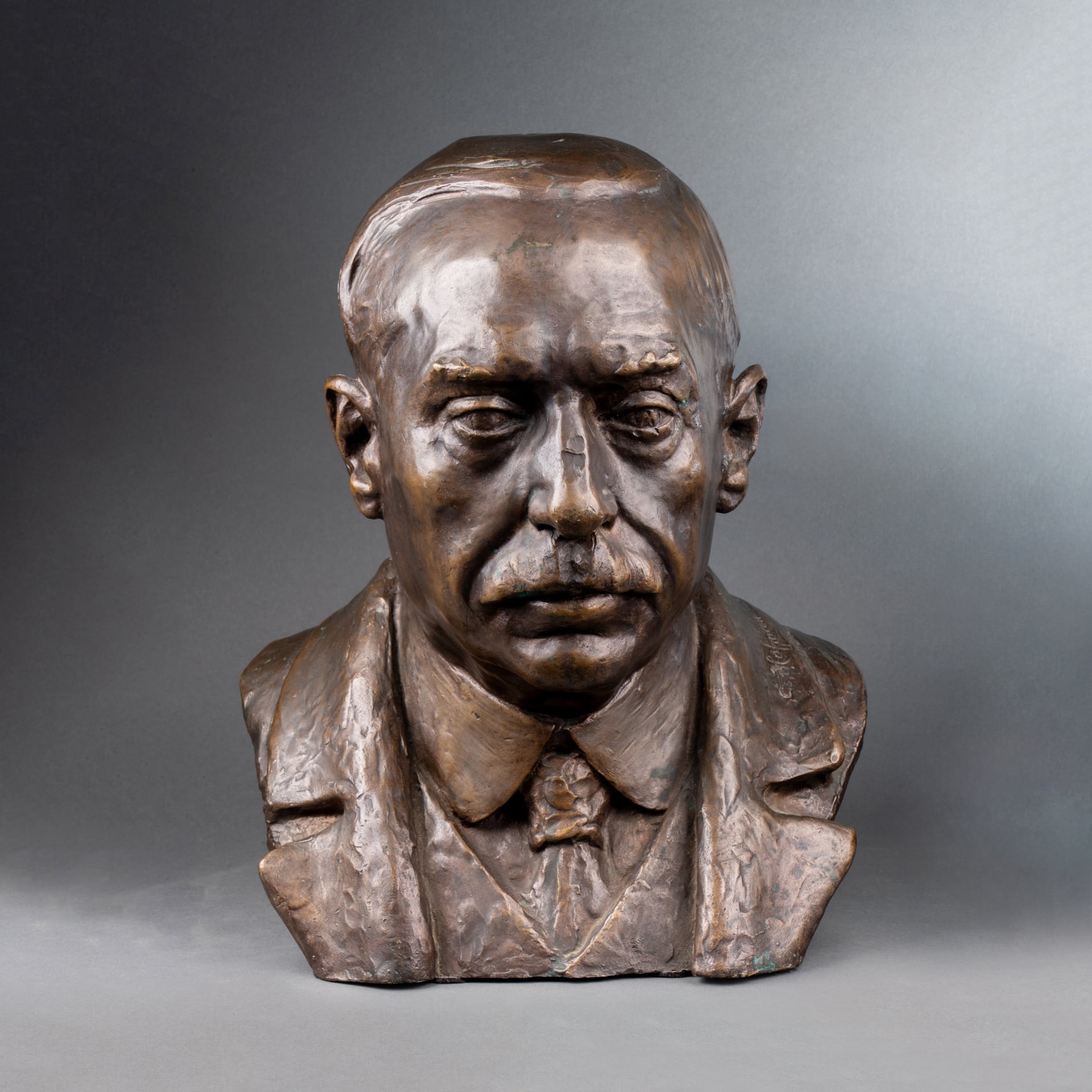
Born September 28th, 1841 in Mouilleron-en-Pareds in Vienne and died in Paris on November 24th, 1929, Georges Clémenceau known as “Le Tigre” was President of the Council under the Third Republic (1870 – 1940) from 1906 to 1909 then from 1917 to 1920. However, he had first undertaken medical studies, had become a doctor to the poor at the end of the Second Empire, his desire for justice was such that politics became evident. He became mayor of Montmartre during the Commune before entering the French politics and making a lasting mark on the history of the first half of the 20th century.
A seasoned anticlericalist, he determinedly advocates the separation between Church and State, and vigorously defends the principle of a secular State, respecting all beliefs equally without having to recognize any of them. According to him, it is imperative that the State does not have to intervene in the religion and beliefs of the citizen, any more than religion and beliefs have to interfere in the functioning of the State.
A fierce opponent of colonization, in 1882 he helped bring down the Ferry and then Freycinet ministries, precisely on this issue. His strong indictments soon earned him a reputation as a “ministry killer”. That of July 31st, 1885 is a famous example:
Superior races have a right over inferior races which they exercise; this right, through a particular transformation, is at the same time a duty of civilization. This is Mr. Ferry’s thesis in its own words, and we see the French government exercising its right over the inferior races by going to war against them and converting them by force to the benefits of civilization. Superior races? inferior races, it will soon be said! For my part, I have been particularly disappointed since I saw German scientists scientifically demonstrate that France had to be defeated in the Franco-German war because the French are of an inferior race to the German. Since that time, I admit, I look twice before turning towards a man and towards a civilization, and pronouncing: inferior man or civilization.
Excerpt from Is colonization a duty of civilization? Georges Clemenceau
July 31st, 1885
He founded the daily newspaper La Justice, the first publication of which was on newsstands on , before working at L’Aurore and taking an active part in the defense of Captain Dreyfus. After being convinced of the captain’s guilt, Clémenceau finally became one of his most ardent defenders, recognizing his initial error and going so far as to make his own indictment, published on December 25th, 1897. Between that year and 1901, he wrote more than 600 articles relating to the affair.
In March 1906, he was appointed Minister of the Interior and referred to himself as the “first cop in France”, a comparison with a bright future. On this occasion, Clémenceau took his nickname “Tiger”. He harshly repressed the strikes which broke out following the explosion in a coal mine in Courrières on March 10th, 1906. This important strike movement undoubtedly marks the rise of socialism and trade unionism at the beginning of the 20th century.
At the outbreak of the First World War in 1914, he was extremely critical of the government in place, while he maintained and loudly proclaimed his opposition to the German Empire. On November 16th, 1917, he was appointed President of the Council by President Poincaré, confident in his ability to bring together the political camps and to assert a determination capable of defeating the prevailing defeatism. His involvement is great and he goes to the front line several times, alongside the soldiers.
A fierce supporter of total victory, his government of the country in the middle of a world war and his role as principal negotiator in the Treaty of Versailles earned him the nickname “Father Victory” at the end of the conflict. Ten days after the signing of the armistice, on November 21st, 1918, he was then 77 years old and had never applied, he was elected to the French Academy, like Marshal Foch. However, he never came to sit under the dome, perhaps so as not to meet Raymond Poincaré there…

Clémenceau and the Impressionists: an Unwavering Friendship
Outvoted in 1920 during the preparatory vote of the Republican group in the National Assembly, he signed his definitive withdrawal from political life.
From then on, Clémenceau notably found the time to meet Claude Monet, a long-time friend, a lifelong intimate whose work he admired. The correspondence between the two men, especially after the war, testifies to a deep friendship and mutual admiration.
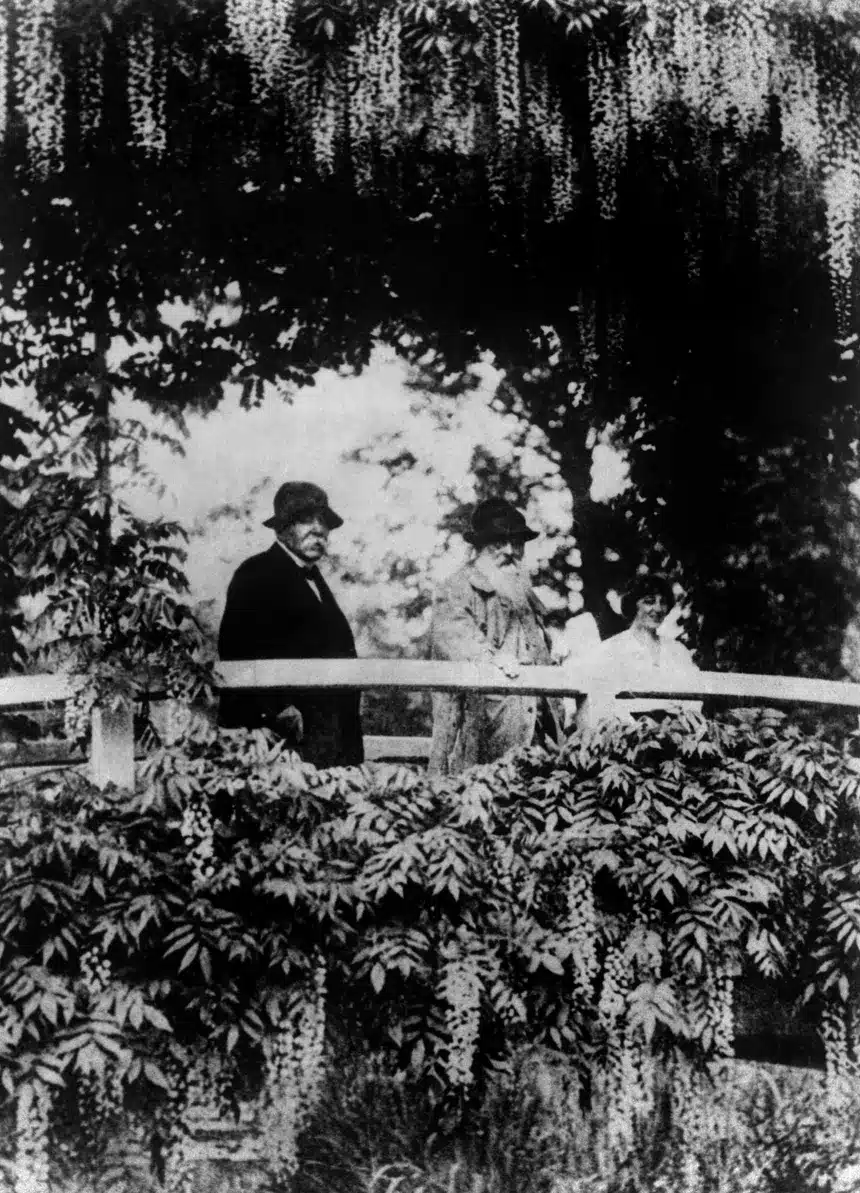
Clémenceau completes the establishment of the painter’s fame which had been a long time coming. Monet indicated to him in a letter the day after the armistice that he wanted to offer him two of the large panels of the Nympheas, the creation of which had absorbed him throughout the war. As soon as he received the letter, Clémenceau went to his friend and faced with the unique, unparalleled work, he convinced Monet to donate to France not two panels but all the Nymphéas. The painter accepts and the Tiger then uses all his energy to offer him a unique setting, worthy of his work. It will be the Orangery, a tribute to the friend of a lifetime who himself shaped the building to accommodate these immense floral and aquatic landscapes.
But Clémenceau defended the artists of his time more broadly. Manet who painted it is also indebted to him. His collection of Asian art enriched the collections of the Guimet Museum. At his death, Clémenceau was a popular figure, whose political and cultural weight was recognized. There is no doubt that it is to this patriotic figure and friend of the arts, essential to France in the first half of the 20th century, that Charles Hofman wanted to pay homage with this bronze bust.
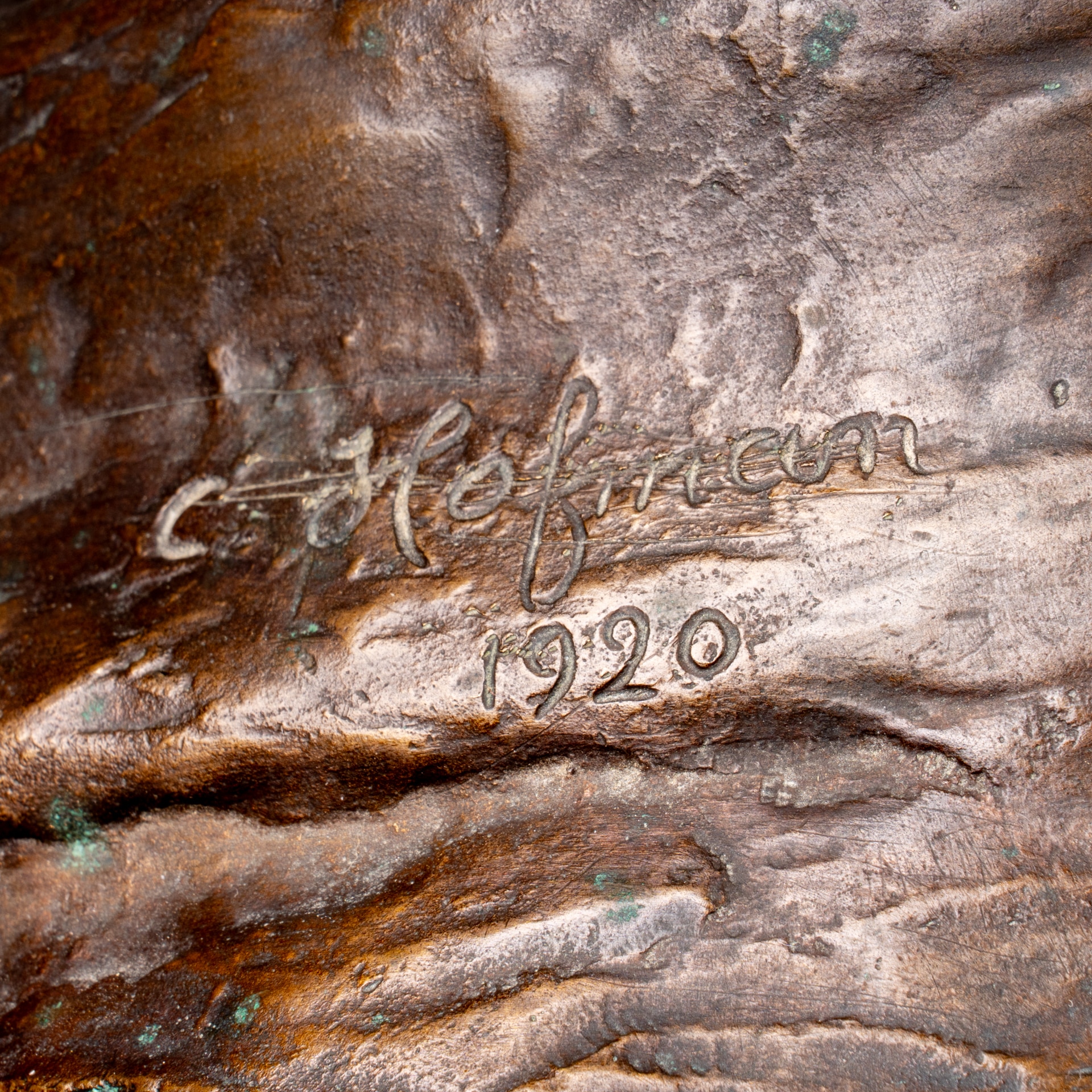
Marielle Brie
Art Historian for Art Market and Cultural Media
Author of the blog Objets d’Art et d’Histoire
Autres ressources et documentations
28 June 2025
Plaster Sculptures, Plaster Casts
For a long time, plaster casts suffered from a poor reputation. Often regarded as crude replicas, and sometimes even dismissed as inexpensive imitations, they nonetheless had…
17 April 2025
The Middle-Ages Furniture
Rare and highly sought-after, Middle-Ages furniture is making a strong comeback. An overview of this market, where enlisting the guidance of a professional is strongly advisable.
18 March 2025
Murano Glass Furniture
Since the beginning of the 20th century, Murano glassmakers have been exploring new horizons. After classic lighting and decorative art, Murano glass is now used to adorn…
16 December 2024
A bronze triton after the sculptures of François Girardon (1628 – 1715) in Versailles
This fountain element is all the more admirable as it is sculpted after the masterpieces of the Pyramid Basin, on the parterre of the North Wing of the Versailles gardens.
18 November 2024
Tyco Bookcase, by Manfredo Massironi, for Nikol International
A pure creation of optical art research in the 1960s, the Tyco library shelf designed by Manfredo Massironi invites the viewer to bring the work of art to life on a daily basis.
3 August 2024
The Ocean Liner Style
In the 20th century, the immense ocean liners connecting the Old Continent and the New World were ambassadors of tastes and innovations on both sides of the Atlantic.



